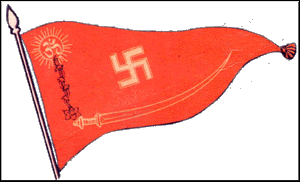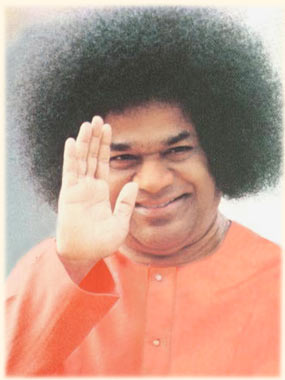The following is a first hand report of the Dharma Sabha by a Temple Project volunteer. Happy Reading!

Hindu Janajagruthi Samithi (HJS) organized a Dharma Sabha on 19th April, 2009 at the D.G. Vaishnav College, Chennai. The auditorium had an electrifying atmosphere with 400 Hindus gracing the occasion.
There was a grand reception, each one was invited by a traditional “Namaste” (becoming rare to hear these nowadays!). Tilak was applied to all (arousing the valiant Hindu spirit within each one),and rose water was sprinkled. Stalls were put up informing people about Hindu culture and spirituality. The meeting started off by the scintillating Veda Parayanam by the Chidambaram Dheekshithars, and soon the entire hall was sanctified.

V Sundaram began his talk by cautioning the Hindus against the forces of global Islam, Christianity, Marxism and the (more dangerous) anti-Hindu pseudo secularism by few political parties. The editor of News Today, expressed his dismay at the alarming rate in which the temples are being destroyed, with the government remaining a mute spectator. He said “A few countries like France, Italy had proudly declared their religion. In the US, before taking a vow, they commence their speech by mentioning ‘I promise on Jesus’, but why do we hesitate?” He concluded by urging every Hindu to feel proud of his religion and establish a Hindu nation.

Uma Ravichandran of HJS pointed out a few achievements of the organization like banning the entry of the film “Love Guru”in India,which demeaned the guru-shishya tradition, etc. She also said that around 8 lakh Hindus were being converted every year. The HJS member voiced “The plight of the children who were made to read the distorted version on Indian History (Ramakrishna Paramahamsa called a lunatic, Bhagat Singh called a terrorist, etc) has to be taken note.” She questioned why no monetary allocation was made for the Hindus and Sikhs after the Anti-Sikh riots and 1993 blasts when the minorities were given 330 crores.
Maharaj Anand Chaitanya Swamiji, a disciple of Swami Dayanand Saraswati, conveyed that if we wanted to protect our samskruti then we have to adhere to Dharma. The Swamiji,asked the crowd if they could make their sons and daughters feel proud of being a Hindu? Swamiji also pointed out that we are fed with biased news from most media houses (which have some vested interest) and asked “In the globalization era, instead of getting influenced, why cannot we influence others? This Hinduism stands not to get influenced,but to influence others.” These talks were laced with the invigorating cries of Vande Mataram, Bharat Mata Ki Jai, etc from the audience.

The last speaker of the day was Jagadguru Shri Jayendra Saraswati, the Shankaracharya of Shri Kanchi Kamakoti Peetham, who began his address with a bang saying “ Only when there is birth, there will be death. As far as Hinduism is concerned, it is primordial (eternally present, without any beginning) and thus it has no death. We have to understand that Dharma always reigns supreme, whether we follow it or not.” The Acharya also said that according to the Tamil Tradition, we address a gathering of people as Sagodhara Sagodharigalle (brothers and sisters), treating each and everyone as our own family member unlike a few who address the people as ‘Paavigalle’ (Sinners).
The Acharya further requested all such organizations to unite as one and work together for Hindu Dharma.
A few resolutions passed by the HJS were:
1) Raise voice against the government for framing Sadhus.
2) Condemn TV channels and newspaper for calling Hindus as terrorists.
3) Execution of death sentence of Afzal guru.
4) Cancellation of funds for the Haj Pilgrims
5) Allocation of permanent place of stay for 5 lakh Kashmiri Hindus.
6) M F Hussain (famous for nude paintings! He painted Bharat Mata and other Hindu Gods and Godesses nude) should be brought back to India, and must be awarded punishment.
7) Protest against conversion.
8) Dheekshithars should have a control over the temple.
9) 10 Rs coin having cross symbol should be withdrawn.
‘Jaya Jaya Shankara Hara Hara Shankara’ was loudly chanted after passing each resolution.
The meeting seemed to be an eye opener for the common Hindu who is usually in his sleeping state (or Tamasic) urging him to bring out the Kshatriya in him. The call of Vivekananda to “Arise, Awake and stop not till the goal is reached” is very much relevant to the Hindu society today.
 Hindus have called for the introduction of "kirtan" as a new field of awards at the famed Grammys to be held at the Los Angeles' Staples Center on January 31 next year. Last Grammys were awarded in 110 music categories, covering 32 fields, including Pop, Rock, Rap, Country, New Age, Gospel, Jazz, Folk, World Music, Latin, Reggae, Blues, etc., for outstanding achievements.
Hindus have called for the introduction of "kirtan" as a new field of awards at the famed Grammys to be held at the Los Angeles' Staples Center on January 31 next year. Last Grammys were awarded in 110 music categories, covering 32 fields, including Pop, Rock, Rap, Country, New Age, Gospel, Jazz, Folk, World Music, Latin, Reggae, Blues, etc., for outstanding achievements.
















